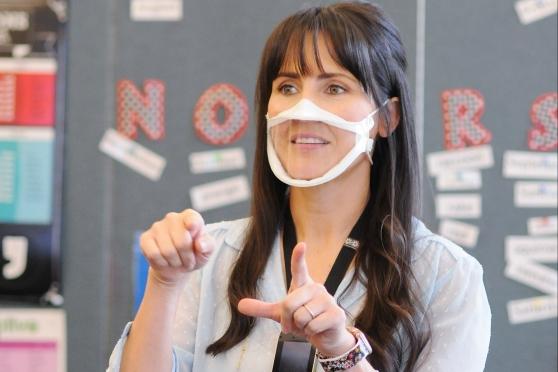A tale from Andrea Kasowitz, teacher of the Deaf and hard-of-hearing

The pandemic has created a wide range of physical challenges for teachers of Deaf and hard-of-hearing students in our school, but we’re not letting them get us down.
Typically, classroom seats would be arranged in a U pattern so all of my nine students would be able to see each other in order to communicate. But social distancing requires that the seats now be arranged in checkerboard fashion.
And because facial expression is part of the grammar of sign language, masks create yet another set of communication problems. I wear a special mini-shield mask as do the two interpreters and the paraprofessional who work with me, but these masks fog up and get very hot so it becomes difficult to breathe. The students wear their own fabric masks.
To compensate for all these communication issues, we now rely more on hearing assistive technology, which means we are communicating with each other through microphones that transmit sound into devices in the ear. Our microphones used to short out when the room was sprayed with disinfectant each night, so we have to protect them and ourselves by wiping them down and covering them at the end of each day.
But the students are amazing and adaptable and taking things in stride. We are in school, attendance is nearly 100% and the students are taking on more responsibility and paying attention more.
We’ve had to give up our field trips, which is a serious loss because these trips were excursions into the outside world to learn how to manage daily living challenges, such as feeling comfortable in restaurants and shopping in stores.
I have taught my students that we don’t give up when there’s a problem. We solve it and move on from there.
But I am exhausted. I spend two hours each night and five hours on weekends working on lessons and supporting my students and their families. Parents reach out 24 hours a day, and I can’t ignore students when they call. I try to be as helpful as I can, and I keep telling myself that this is temporary.
— As told to reporter Dorothy Callaci